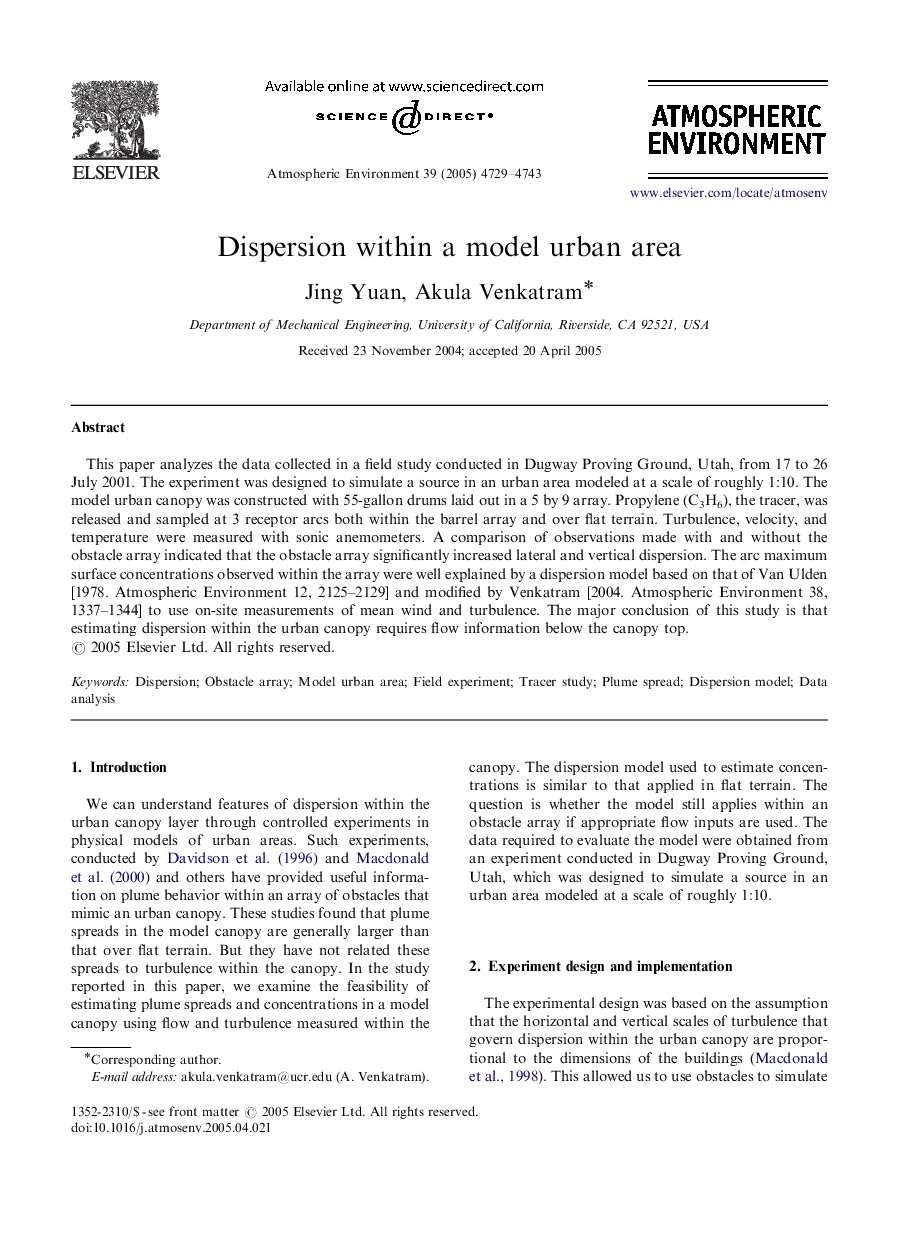| Article ID | Journal | Published Year | Pages | File Type |
|---|---|---|---|---|
| 4445428 | Atmospheric Environment | 2005 | 15 Pages |
This paper analyzes the data collected in a field study conducted in Dugway Proving Ground, Utah, from 17 to 26 July 2001. The experiment was designed to simulate a source in an urban area modeled at a scale of roughly 1:10. The model urban canopy was constructed with 55-gallon drums laid out in a 5 by 9 array. Propylene (C3H6), the tracer, was released and sampled at 3 receptor arcs both within the barrel array and over flat terrain. Turbulence, velocity, and temperature were measured with sonic anemometers. A comparison of observations made with and without the obstacle array indicated that the obstacle array significantly increased lateral and vertical dispersion. The arc maximum surface concentrations observed within the array were well explained by a dispersion model based on that of Van Ulden [1978. Atmospheric Environment 12, 2125–2129] and modified by Venkatram [2004. Atmospheric Environment 38, 1337–1344] to use on-site measurements of mean wind and turbulence. The major conclusion of this study is that estimating dispersion within the urban canopy requires flow information below the canopy top.
